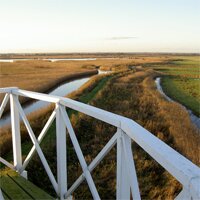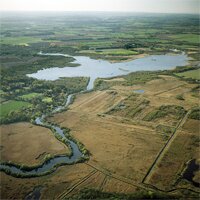Policy for protected landscapes


England’s National Parks and Areas of Outstanding Natural Beauty (AONBs) cover nearly a quarter of the land area of England, which, together form some of our finest protected landscapes. As well as being landscapes of great aesthetic quality, these protected areas provide a major repository for some of our most important historic sites, containing over 63,300 listed buildings, more than 10,400 nationally important ancient monuments (about half of those designated in England) and in excess of 300 designated historic parks and gardens.
England’s protected landscapes are amongst its finest and most treasured landscapes. The landscapes we see today are cultural landscapes – the result of thousands of years of human influence on the countryside as people interact with nature. They continue to be living and working landscapes and the people who manage the land today help safeguard their special qualities.
The document A Clear View provides more information on how protected areas work in the UK.
National Parks
In 1995, partnership working on the historic environment between the statutory heritage and countryside agencies of England and Wales and the National Parks was formalised by a Joint Statement on the Historic Environment in the National Parks of England and Wales, which recognised the particular opportunity provided by the Parks for the conservation of the historic environment, the promotion of public understanding of the heritage and the sharing of best practice. This commitment to co-operation was further strengthened in 1998 by a Declaration of Support for the Historic Environment of the National Parks of England and Wales and in 2004 by the launch of a revised Joint Statement and Joint Action Plan for the National Park Authorities and the agencies.
In order to mark more than 10 years of joint working on the historic environment, English Heritage, the Countryside Agency and the English National Park Authorities produced A Landscape Legacy: National Parks and the historic environment. The publication highlights a number of exemplary projects drawn from around England.
Areas of Outstanding Natural Beauty
In December 2004 English Heritage, Cadw (the Welsh Assembly Government's historic environment division) and the National Association for Areas of Outstanding Natural Beauty (NAAONB) signed the first joint Accord on the historic environment. The Accord represents a commitment by the three organisations to work in partnership in order to promote the conservation, understanding, and public enjoyment of the heritage in AONBs.
To celebrate the signing of the Accord in May 2005 English Heritage, Cadw and NAAONB jointly published a publication titled Outstanding Beauty: Outstanding Heritage - AONBs and the Historic Environment. The publication celebrates some of the excellent historic environment work taking place within AONBs in England and Wales.
A Strategy for Historic Environment Research in Protected Landscapes
English Heritage is committed to enhancing understanding, enjoyment and conservation of the historic environment in Protected Landscapes through annual action plans agreed with the National Association for Areas of Outstanding Natural Beauty and the National Parks, and through strategically targeted investigation. This strategy document, developed in consultation with English Heritage stakeholders and conservation staff from both the AONB and National Park Authorities, aims to define how English Heritage’s historic environment research in Protected Landscapes should be progressed over the next five years. It identifies priority areas and issues, addressing which will allow English Heritage’s research resources to be targeted where they are most needed and will deliver the greatest benefit.
The strategy has four main goals:
To support those charged with managing Protected Landscapes through the provision of applied and carefully-targeted baseline research, advice and training to underpin the development and delivery of Management Plans
- To focus research to where it is most needed to underpin and promote sustainability in Protected Landscapes
- To work in partnership with those who manage Protected Landscapes to engage local communities in the enjoyment, understanding and stewardship of the historic environment
- To build capacity, especially in the commercial and voluntary sectors, to ensure that in the long-term there is the critical mass of skills and expertise needed to sustain informed conservation of the historic environment in Protected Landscapes.
Partnerships will be the key to successful implementation, with English Heritage acting primarily as an enabler, undertaking or commissioning work where its skills and expertise, or its national remit, will make the critical difference.
The strategy will provide a transparent framework for decisions on where support will be directed, and the level of support. The document will be reviewed annually and refreshed as needed in consultation with the major stakeholders.
What's New?
-
The National Heritage List for England is now live on the English Heritage website.
-
Welcome to the HER21 page. This page offers access to the full suite of HER21 project reports.
